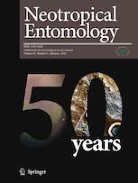Ver ítem
- xmlui.general.dspace_homeCentros Regionales y EEAsCentro Regional Patagonia NorteEEA BarilocheArtículos científicosxmlui.ArtifactBrowser.ItemViewer.trail
- Inicio
- Centros Regionales y EEAs
- Centro Regional Patagonia Norte
- EEA Bariloche
- Artículos científicos
- Ver ítem
A Key Interaction Behind the Scenes: Dung Beetles in Livestock Production from Arid and Semi-Arid Rangelands
Resumen
Pastoralism is a dominant agricultural activity in arid and semi-arid ecosystems. The interaction between coprophagous insects and livestock is a key but an undervalued topic in rangeland management decisions. The objective was to identify similarities and differences in the composition of coprophagous insects and nesting strategies, associated with different climatic conditions within these regions. We performed a literature review of research articles
[ver mas...]
Pastoralism is a dominant agricultural activity in arid and semi-arid ecosystems. The interaction between coprophagous insects and livestock is a key but an undervalued topic in rangeland management decisions. The objective was to identify similarities and differences in the composition of coprophagous insects and nesting strategies, associated with different climatic conditions within these regions. We performed a literature review of research articles available in the Scopus database which resulted in 17 articles. We examined the taxonomic diversity of dung beetles and their nesting strategies in relation to temperature and precipitation at the study sites. Results revealed a rich and varied interaction between dung beetles and livestock in arid and semi-arid environments, with 364 species from the Scarabaeoidea superfamily documented worldwide. The greatest diversity of dung beetles was reported in hot arid and semi-arid conditions with dry winters and in cold semi-arid ones with no marked annual precipitation cycle. These insects displayed diverse nesting strategies, with endocoprid strategies predominating in colder and drier settings, and paracoprid and telecoprid strategies in warmer, more humid environments. Domestic animal species are currently key components in promoting this interaction, which indicates that the ecological processes involving coprophagous fauna are occurring in production systems, which are under the influence of human decisions. We discuss the design and planning of livestock and rangeland management in arid and semi-arid environments, emphasizing in a more formalized manner the inclusion of this kind of interaction.
[Cerrar]

Fuente
Neotropical Entomology : 1-11 (Published: 12 February 2024)
Fecha
2024-02
Editorial
Springer
ISSN
1678-8052
Formato
pdf
Tipo de documento
artículo
Palabras Claves
Derechos de acceso
Restringido
 Excepto donde se diga explicitamente, este item se publica bajo la siguiente descripción: Creative Commons Attribution-NonCommercial-ShareAlike 2.5 Unported (CC BY-NC-SA 2.5)
Excepto donde se diga explicitamente, este item se publica bajo la siguiente descripción: Creative Commons Attribution-NonCommercial-ShareAlike 2.5 Unported (CC BY-NC-SA 2.5)


